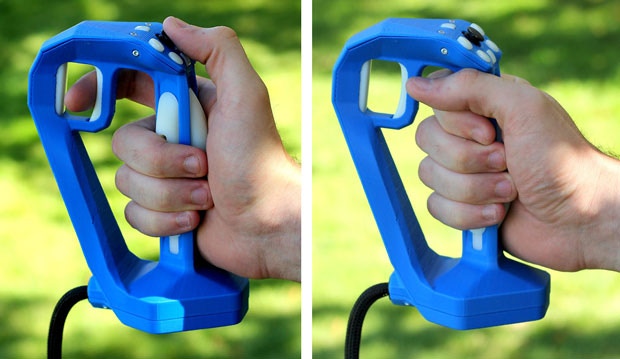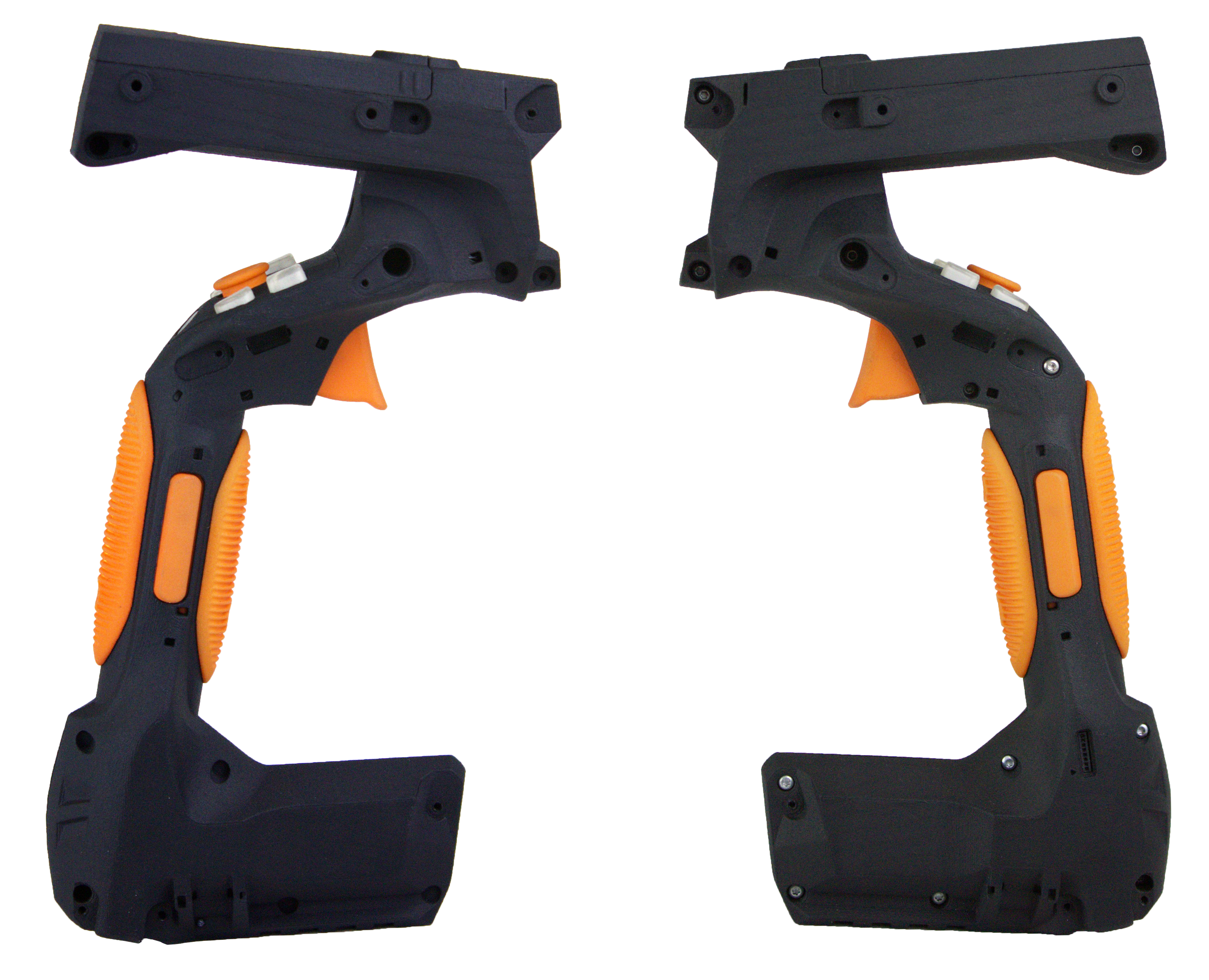Tactical Haptics today announced the new production-ready design for their haptic VR controllers which adapt the shape of their grip to make using virtual objects feel more real.
The company originated from a 2013 Kickstarter. While the campaign was unsuccessful, the company believed its idea was so good that they continued developing the project anyways. Since then, the company has been refining its technology and design. Today, it’s ready for full production.
Whereas most VR controllers simply deliver vibration feedback, these controllers each have three metal plates inside their handles which move up and down to replicate motions and forces on the object you’re holding in that hand. For example the feeling of hitting an enemy with a club, opening a door by its handle, or just the weight of an object moving around in your hand should all feel more convincing than they do on Touch or Vive controllers. The controllers have been designed from the start to work with multiple tracking systems.

In recent years affordable 6DoF controllers have become standard across much of consumer VR. As such, the company has pivoted to the location-based VR and VR training markets. Location-based experiences have higher budgets for hardware to create a more immersive experience than consumer VR, whereas training experiences often need better haptic feedback to accurately represent the real life object they’re training for.
Last year, IMAX decided to use Tactical Haptics controllers for its Justice League location based VR experience, made in partnership with DC Comics. They have been using a “minimum viable product” (MVP) version of the controllers for this.

Whereas the MVP controllers were designed to accommodate the specific tracking systems the company wanted to support directly, the new ones instead have a general magnetic socket. Third parties can make adapters for this socket to allow the use of tracking hardware like Oculus Touch, HTC Vive trackers, Windows MR controllers, OptiTrack, or future tracking hardware. The company tells us that this allows the controllers to be smaller, cheaper to manufacture, and more future proof.
The company is currently seeking new partnerships with location-based VR and training VR companies, and will be announcing more details early next year. We’re excited to see advanced VR controller haptics spread to more VR locations, and hopefully one day the consumer market too.

























